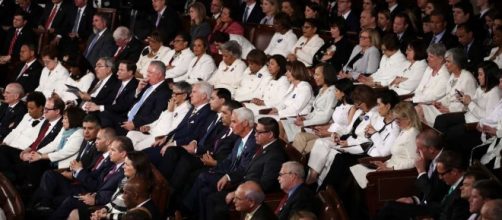February 2017, sixty-six Democratic women in the United States Congress wore white to President Trump's first address to the joint congress. Their stated premise was to show continued support for the American woman. "We wear white to unite against any attempts by the Trump administration to roll back the incredible progress women have made in the last century, and we will continue to support the advancement of all women," said Florida Democratic Representative Lois Frankel.
Sitting together and smartly poised, the white-wearing contingent attended the congressional speech and were unified in their reactions and apparel.
Clean, crisp white clothes from head to toe set them apart from all others. If solidarity was what they wanted, it worked. But, what has come next may - or may not - be exactly what this group had originally planned.
Who wears white and why
According to the Democratic Women's Working Group, the color white has strong and direct ties to the women's suffrage movement of the early twentieth century. Suffragettes wore white to signify unification and purity as well as to stand out in a field of darkly dressed crowds. Within the history of the United States, however, suffragettes are not the only group to wear white only.
Associations with brides, Catholic nuns, ghosts, and babies, no harm, no foul.
However, white robes in solidarity is also the horrific tradition of the Klu Klux Klan, a group with whom the Democratic women would never emulate. In less time than it took to select the outfits, social media memes cropped up instantly linking the two groups. An unintended consequence, but a consequence.
All eyes were focused
Past such solidarity movements have included the wearing of blue ties or red ties or lapel ribbons of all colors. None of those activities, however, secured near as much attention as sixty-six women lined up with each other in white. The women-in-white grabbed the attention each time the chamber cameras crossed their paths. Success was theirs.
However, it also outlined some potential professional faux-pas - as they texted, tweeted, and focused more on their cellphones than on either listening to the speech or sitting in solidarity without distraction.
They certainly did not have to nor were they expected to agree with the POTUS
But as professional, respected congressional leaders who had the entire free world watching, their behavior was being newly and overtly showcased. Lesson learned? Leave phones alone when wearing white together or wear dark clothes so that the devotion to digital tools goes unnoticed.

